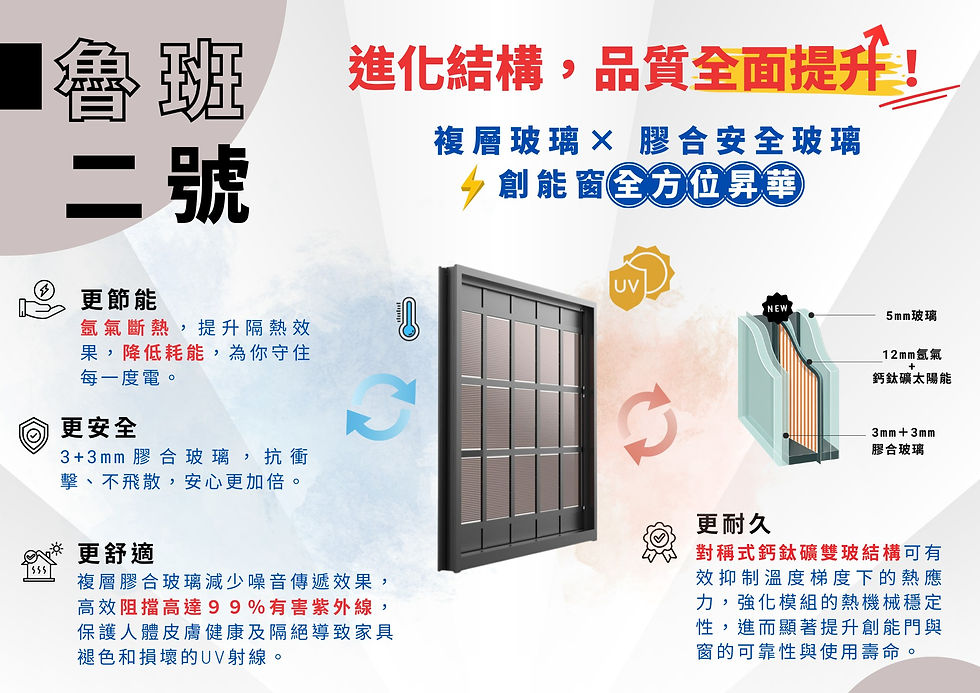NREL 突破鈣鈦礦電池的穩定性和效率
- Emily

- 2022年9月16日
- 讀畢需時 3 分鐘
已更新:2022年11月3日

一個太陽照度下經認證穩定效率為24%, 在55℃下運行2,400小時後,該高效電池還保持了87% 的原始效率。
研究人員使用了反式架構,而不是迄今為止產生最高效率的“正式”架構。兩種類型之間的差異取決於各層在玻璃基板上的沉積方式。反式鈣鈦礦結構以其高穩定性和集成雙結(tandem)太陽能電池中而聞名。NREL領導的團隊在鈣鈦礦表面添加了一種新分子3-(氨基甲基)吡啶 (3-APy)。該分子與鈣鈦礦內的甲脒反應,在鈣鈦礦層表面產生電場。
3-APy 反應性表面工程可以將反式電池的效率從不到 23% 提高到 25% 以上。這種反應性表面工程是一種有效的方法,可以顯著提高反式電池的性能,達更高的效率和可靠性。
Researchers at the U.S. Department of Energy’s (DOE’s) National Renewable Energy Laboratory (NREL) made a technological breakthrough and constructed a perovskite solar cell with the dual benefits of being both highly efficient and highly stable.
The work was done in collaboration with scientists from the University of Toledo, the University of Colorado–Boulder, and the University of California–San Diego.
A unique architectural structure enabled the researchers to record a certified stabilized efficiency of 24% under 1-sun illumination, making it the highest reported of its kind. The highly efficient cell also retained 87% of its original efficiency after 2,400 hours of operation at 55 degrees Celsius.
The paper, “Surface Reaction for Efficient and Stable Inverted Perovskite Solar Cells,” appears in the journal Nature. The authors from NREL are Qi Jiang, Jinhui Tong, Ross Kerner, Sean Dunfield, Chuanxiao Xiao, Rebecca Scheidt, Darius Kuciauskas, Matthew Hautzinger, Robert Tirawat, Matthew Beard, Joseph Berry, Bryon Larson, and Kai Zhu.
Perovskite, which refers to a crystalline structure, has emerged in the last decade as an impressive means to efficiently capture sunlight and convert it to electricity. Research into perovskite solar cells has been focused to a large degree on how to increase their stability.
“Some people can demonstrate perovskites with high stability, but efficiency is lower,” said Zhu, a senior scientist in the Chemistry and Nanoscience Center at NREL. “You ought to have high efficiency and high stability simultaneously. That’s challenging.”
The researchers used an inverted architecture, rather than the “normal” architecture that has to date yielded the highest efficiencies. The difference between the two types is defined by how the layers are deposited on the glass substrate. The inverted perovskite architecture is known for its high stability and integration into tandem solar cells. The NREL-led team also added a new molecule, 3-(Aminomethyl) pyridine (3-APy), to the surface of the perovskite. The molecule reacted to the formamidinium within the perovskite to create an electric field on the surface of the perovskite layer.
“That suddenly gave us a huge boost of not only efficiency but also stability,” Zhu said.
The scientists reported the 3-APy reactive surface engineering can improve the efficiency of an inverted cell from less than 23% to greater than 25%. They also noted the reactive surface engineering stands out as an effective approach to significantly enhance the performance of inverted cells “to new state-of-the-art levels of efficiency and operational reliability.”
Funding for the research done at NREL came from the Center for Hybrid Organic-Inorganic Semiconductors for Energy (CHOISE), an Energy Frontier Research Center within DOE’s Office of Basic Energy Sciences, and from the DOE’s Solar Energy Technologies Office.
NREL is the U.S. Department of Energy's primary national laboratory for renewable energy and energy efficiency research and developm




留言